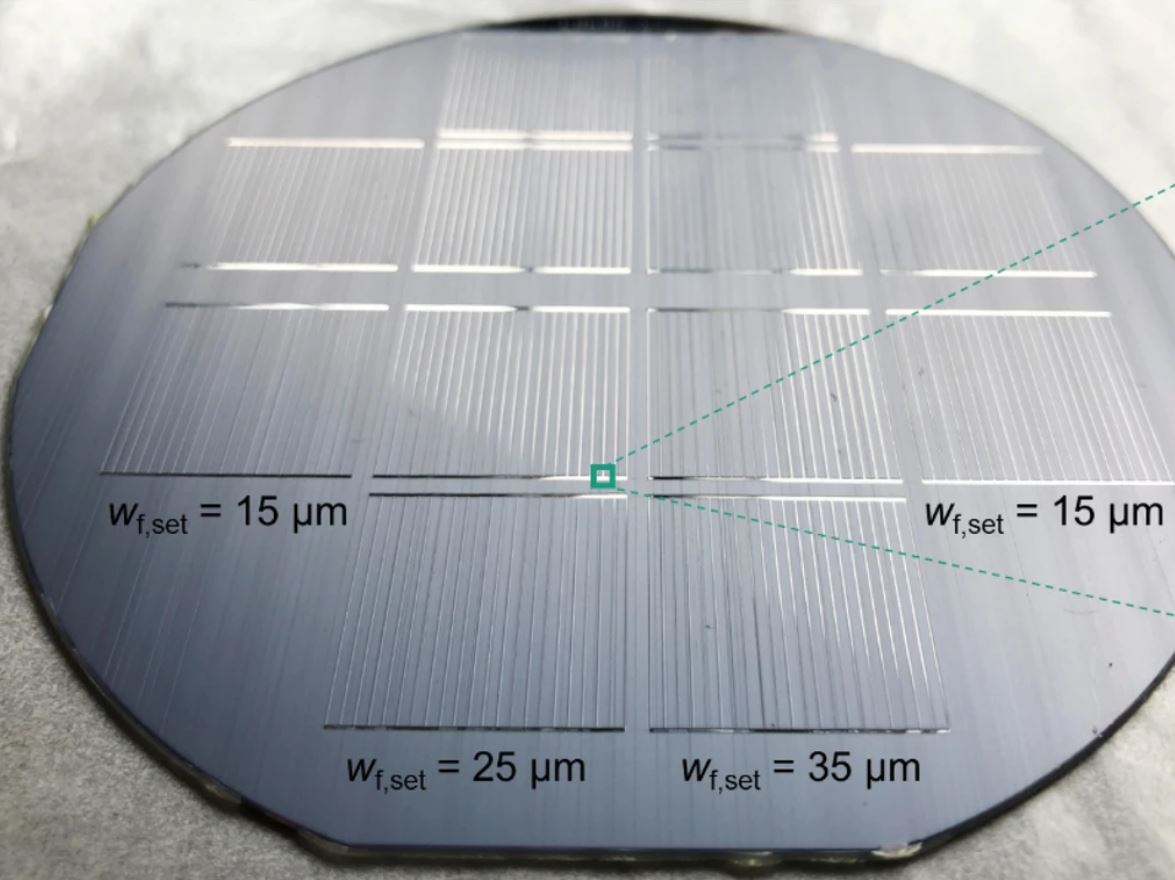Scientists at Germany's Fraunhofer Institute for Solar Energy Systems (Fraunhofer ISE) have fabricated a III-V gallium arsenide (GaAs) solar cell via a new front metallization process that is claimed to be scalable, low cost and efficient.
The high cost of producing solar cells based on compounds of III-V element materials, named according to the groups of the periodic table that they belong to, has confined these devices to niche applications, such as drones and satellites, where low weight and high efficiency are more pressing concerns than the cost of energy produced.
“For the first time, the successful application of mask and plate metallization on such devices is demonstrated,” the researchers stated. “Considering cost and scaling potential, mask and plate has the potential to transform the processing of any III–V-based photovoltaic device.”
For mask and plate front metallization, the group used metalorganic vapor-phase epitaxy (MOVPE), which is a chemical vapor deposition technique used to produce single- or polycrystalline thin films, and also implemented a new two-step printing scheme that reportedly allows for the realization of extremely narrow mask openings.
“Using such narrow mask openings, plated contact fingers were realized,” the academics said, noting that the metallized area of the sample cell did not exceed the parts confined by the mask. “It demonstrates that fingers with a shading width of (10.5 ± 0.8) µm can be realized using mask and plate processing.”
They also fine-tuned drop spacing at the fingers’ mask openings, where they meet busbars, in order to avoid resistive losses. “This ensures great homogeneity in width of the final fingers and, thus, supports the light-generated current flow out of the cell,” they explained.
They then formed the contact fingers by nickel electroplating into the mask openings and said the plated fingers stood out by great homogeneity and sharpness at the finger edges. “The fact that the finger edges do not show bleeding-like structures underlines the high quality of this metallization,” they emphasized.
The champion solar cell built with the proposed architecture achieved a power conversion efficiency of 31.6%. “This clearly demonstrates the great potential of this metallization approach for III–V//Si solar cells,” the scientists concluded.
Their approach was presented in the paper “Mask and plate: a scalable front metallization with low-cost potential for III–V-based tandem solar cells enabling 31.6 % conversion efficiency,” published in scientific reports.
This content is protected by copyright and may not be reused. If you want to cooperate with us and would like to reuse some of our content, please contact: editors@pv-magazine.com.




It’s very use fully
No